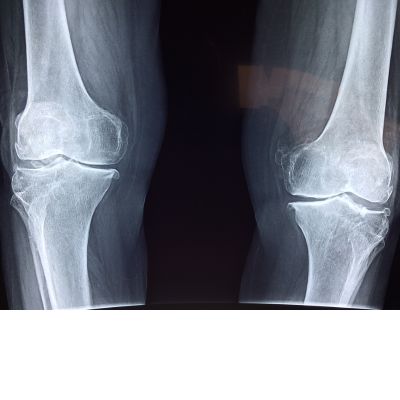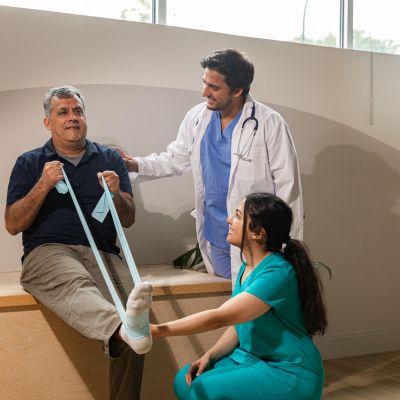Is Knee Replacement Necessary in All Types of Osteoarthritis? Exploring Advanced Nonoperative Care Options
Osteoarthritis (OA) of the knee is a growing concern among aging populations and active individuals alike. With the rise in sedentary lifestyles, obesity, and longer life expectancies, more people are experiencing the painful and often debilitating effects of knee OA.
But one critical question often arises in the mind of patients and clinicians: Is knee replacement surgery truly necessary for all cases of osteoarthritis?
The simple answer is no — knee replacement is not necessary in all cases of osteoarthritis. Let’s explore when it is needed, when it can be avoided, and what advanced nonoperative treatments are showing excellent outcomes in modern care.

Understanding Knee Osteoarthritis
Knee osteoarthritis is a degenerative joint disease where the cartilage that cushions the knee gradually wears away. As the condition progresses, it can lead to:
- Pain and stiffness
- Swelling and inflammation
- Reduced range of motion
- Grinding or locking sensation
OA can be classified based on severity:
- Mild OA: Minor joint space narrowing and discomfort during activity.
- Moderate OA: Increased pain, occasional swelling, some limitations in function.
- Severe OA: Continuous pain, limited mobility, and clear joint space loss on X-ray.
When Is Knee Replacement Necessary?
Total knee replacement (TKR) is considered a last-resort treatment and is generally recommended only when:
- Nonoperative treatments have failed.
- Pain is severe and persistent, even at rest.
- Quality of life is significantly impaired.
- Joint deformity is progressing.
- Radiological evidence shows end-stage osteoarthritis.
Surgery can offer excellent pain relief and restore function — but it comes with risks like infection, blood clots, implant wear, or long recovery periods. Hence, conservative treatment options should be exhausted first.
When Can Knee Replacement Be Avoided?
Many patients with mild to moderate OA, or even some with advanced OA who are not ideal surgical candidates (due to age, medical conditions, or personal preference), can delay or completely avoid knee replacement through advanced non-surgical interventions.
Here’s where modern nonoperative care shines.

Advanced Nonoperative Management Options
1. Physiotherapy and Movement Correction
Evidence-based physiotherapy is one of the cornerstones of managing knee OA without surgery. It addresses muscle imbalances, improves joint mechanics, and enhances mobility.
Key components include:
- Quadriceps and gluteal strengthening
- Neuromuscular training
- Manual therapy for soft tissue and joint mobilization
- Gait re-education to reduce stress on the knee
🧠 Your physiotherapist can design a program tailored to your body mechanics, which can significantly delay the need for surgery.
2. Weight Management and Nutritional Optimization
Excess weight increases the mechanical load on the knees — every extra 1 kg of weight adds about 4 kg of pressure on the knee joint. Weight loss of even 5–10% can significantly reduce pain and improve function.
Additionally, incorporating anti-inflammatory foods like turmeric, omega-3 fatty acids, and green leafy vegetables can support joint health.
3. Injections and Regenerative Therapies
a. Viscosupplementation (Hyaluronic Acid Injections)
Helps lubricate the knee joint, mimicking natural synovial fluid. It may delay surgery for 6–12 months in many patients.
b. Platelet-Rich Plasma (PRP) Therapy
PRP involves using your own blood, processed to concentrate platelets and growth factors, then injecting it into the joint to promote tissue healing and reduce inflammation.
🧪 Studies suggest PRP is more effective than corticosteroids or hyaluronic acid in mild to moderate OA.
c. Stem Cell Therapy
Emerging as a powerful tool in regenerative medicine, stem cell injections can potentially repair cartilage damage and reduce pain. Although still under research, results are promising for selected candidates.
4. Orthobiologics and Advanced Therapies
Newer injectable options, often grouped as orthobiologics, include:
- Amniotic fluid products
- Bone marrow aspirate concentrate (BMAC)
- Adipose-derived stem cells
These are being used in high-level sports medicine and are gradually becoming available to the general public.
⚠️ Note: These treatments should be guided by professionals trained in musculoskeletal regenerative medicine.
5. Shockwave Therapy (ESWT)
Extracorporeal shockwave therapy is a non-invasive technique that delivers high-energy pulses to the knee area. It is used to:
- Stimulate healing
- Reduce pain
- Improve circulation in degenerative tissues
Especially useful in early to moderate OA, ESWT is gaining popularity as an adjunct to physiotherapy.
6. Radiofrequency Ablation (RFA)
This minimally invasive technique involves targeting the sensory nerves of the knee with controlled heat to “shut down” pain signals.
- Especially effective in patients not ready or eligible for surgery
- Relief can last 6 months to 2 years
- Procedure is done under local anesthesia
7. Assistive Technology and Smart Bracing
Modern offloading knee braces redistribute forces within the knee joint to reduce pressure on the damaged area.
Additionally, wearable tech and smart insoles provide biofeedback for gait correction and activity monitoring, which enhances long-term outcomes.
Mind-Body Connection and Patient Education
Patients often underestimate the role of the mind-body connection in managing chronic joint pain.
Incorporating the following can improve patient outcomes:
- Pain neuroscience education
- Stress management techniques
- Sleep hygiene
- Tai chi and yoga
These practices reduce central sensitization — where the nervous system becomes hypersensitive to pain — commonly seen in long-standing OA.
A Personalized Approach Is the Key
Osteoarthritis is not a “one-size-fits-all” condition. The management must be individualized based on:
- Patient age and activity level
- Severity of degeneration
- Presence of comorbidities
- Patient goals and lifestyle
At Recovery Physiotherapy, we prioritize holistic assessment and evidence-based treatment plans. We empower patients with the tools and therapies they need to avoid unnecessary surgery whenever possible.
Final Thoughts: Surgery Is an Option, Not a Sentence
Knee replacement has helped millions regain their mobility — but it’s not the only option.
If you’re facing a diagnosis of osteoarthritis, remember:
“A well-informed patient is the most empowered patient.”
Explore all nonoperative options before opting for surgery. Many advanced treatments are now available to relieve pain, restore function, and delay or avoid surgery altogether.
Need Help Deciding What’s Best for You?
Reach out to Recovery Physiotherapy at C646, Koelnagar, Rourkela, or call us at 9556135581.
Follow us on Instagram and YouTube at Recovery Physiotherapy for more tips and treatment updates.
Together, let’s move better, live pain-free, and avoid surgery when possible.
